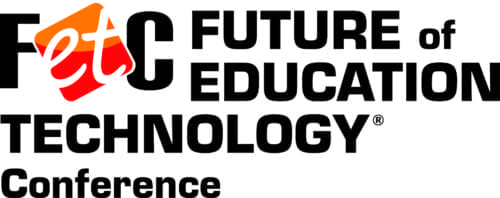In the second of three panels, part of the all-day, six-session Blueprint for Education Technology Summit, education leaders tackled a big question: How do we make the right decisions around data system and technology tools? This session was moderated by Blueprint organizer and international education consultant Dr. Matt Harris, and featured a trio of high-powered panelists: James Russo, Sr. Director of Curriculum and Instruction for Orange County Public Schools; pioneering edtech researcher Dr. Sonny Magana; and Alex Inman, president of Educational Collaborators.
This is one of the major issues in technology infrastructure. Leaders have numerous decisions to make in determining the right tools and systems to drive academic and operational successes. What are the questions leaders should be asking when seeking to make informed decisions that will drive success? What is the purpose of our technology, and what benefits are we trying to gain? These were just a couple of the topics explored in this deep discussion.
A Common Language Supports Decision-Making
The early part of the discussion aimed to determine how all stakeholders, from teacher to IT director, can effectively collaborate to support sound decision-making. “We need a common language,” said Magana, explaining that everyone in the district, in both academic roles and technology leadership roles, needs to have a way to clearly communicate about tools that have a positive impact on teaching and learning, in order to focus on the right tech and move us away from systems that are technologically rich but innovatively poor.
If the educators in the building don’t understand why certain tech is being used, it’s time to go back to the beginning and address the why. According to Russo, for school leaders, “It comes down to ‘why do I need a computer, why do I need this technology?’” These are key questions for all districts to answer, to identify the purpose and benefits of tech tools.
“It really comes down to communication in all pieces,” Russo later added, along with valuing each individual’s role in the process. What if a product is great from an IT perspective, but not effective academically? If you build a great infrastructure, how do you make sure it’s doing all the things it needs to do?
What Kind of Student Are You Seeking to Develop?
So, once a common language is developed, how do schools determine what indicators they should be tracking to ensure decisions are being made for the right reasons?
“What kind of student are you seeking to develop?” This is the overarching question, according to Inman. What are the outcomes you want from students, not just academically but also social-emotionally and citizenship-wise. “If you start with citizenship in mind instead of firewall best practices, you get there faster and develop that common language.”
Some of the leading indicators for success in building technology systems include “comfort with sharing your failure with peers” in an honest way, explained Inman. He and his colleagues learned through experience that this was a stronger indicator that sharing successes. The genuine reflection is something everyone can learn from. Coupling this with a genuine understanding of the goals a school has for students enables leaders to be reflective and responsive in addressing their needs.
What About Data?
Why is data such a big deal now? This was another question discussed by the panel, and each expert gave insights to increase the audience’s understanding of data and its use in school systems. We should really be thinking about what kind of data will help us measure student achievement, explains Magana. We need to be “measuring what we value” rather than “valuing what we measure.” Data has always been important, but we are attempting to get better and better at collecting the right data and being able to use it correctly. “If you want to know what your leading indicators are,” he says, “listen to your students. Listen to your teachers.” This will tell you what to value.
In order to answer questions with data, says Inman, you need access to your data. This means you need systems that are interoperable. “You need to be demanding access to the full API for all your tools,” he says. Using ETL software to extract, transfer, and load the makes data transfer more efficient and makes it easier to access and analyze the right data.
Ultimately, the panelists agreed that making the right decisions on such large issues as data system and technology tools starts with understanding your students’ needs, what will help them achieve results and, conversely, what tech is not up to the task. When all stakeholders in the system align around a common language, they can have productive conversations, account for each individual’s role in the decision-making process, and end up making better decisions. Data is one part technology, but also driven by asking the right questions and pushing analysis deeper. Taken step-by-step, this process can lead to major successes for districts and schools.
 Session:
Session:
Making the Right Decisions Around Data System and Technology Tools
- Matt Harris, International Education Consultant, International EdTech
- James Russo, Sr. Director of Curriculum and Instruction, Orange County Public Schools
- Sonny Magana, Pioneering EdTech Researcher, Magana Education
- Alex Inman, President, Educational Collaborators
Further Reading
- FETC Blog – Big Things You’ll Experience at FETC 2019
- Getting Smart – 26 Can’t-Miss Education Conferences for 2019
- The Ed Tech Round Up – Creating An Effective EdTech Ecosystem & Making the Best Use of Tech Tools


